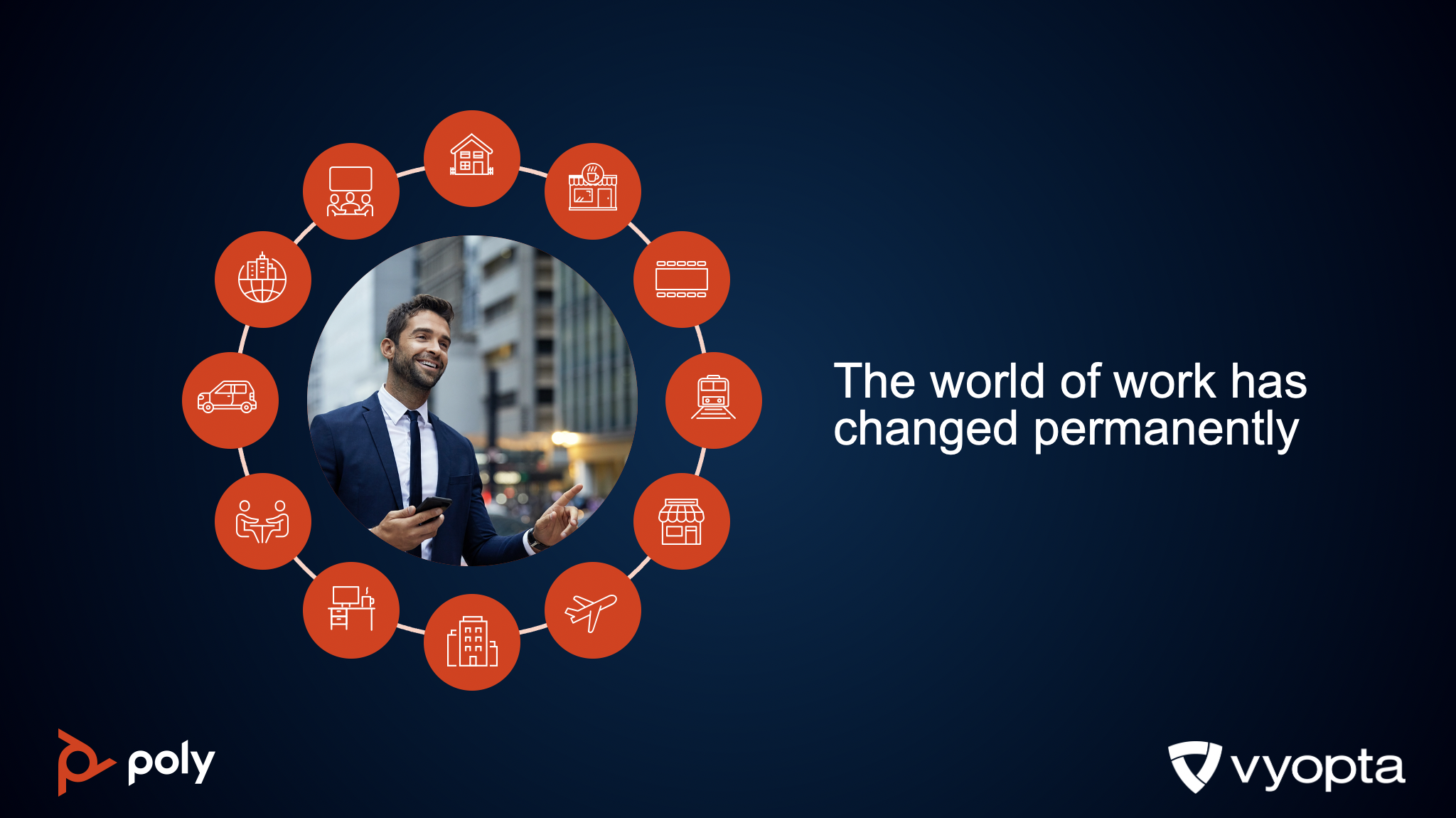.png)
Whenever the day comes that the bulk of the U.S. knowledge worker workforce returns to the office, it’s increasingly likely that “the office” they return to will look and feel drastically different than it did in the spring before the onset of the Covid-19 pandemic.
Think about desks booked like hotel rooms and only used for short work intervals before being vacated and extensively cleaned. Or consider a big reliance on huddle rooms to aid in social distancing, along with conference rooms that once held 10 people used as permanent spaces for only two or three workers.
And video conferencing and remote collaboration tools – under the umbrella of unified communications – will be more important than ever to help in-office workers and those who remain home based to get their work done or brainstorm in a manner as close as possible to life before Covid.
Those insights and many more came from Liam McDonough, Facebook’s lead collaboration engineer, during a recent webinar with Vyopta leaders that looked at the long-term effects of Covid-19 on the workplace. McDonough is an undeniable expert on the workspace and how people interact in the workplace, with Facebook utilizing more than 13,000 conference rooms prior to the pandemic.
With technology now needed to facilitate most work-related interactions, he said the demands on infrastructure have been dramatic. So too has been the need to address issues like making sure that an employee’s home computer and Internet connection are able to perform properly.
“If you told me a year ago we’d be helping users, you know, figure out their home networks, I would say there was no way. But now it’s so, so, so important to think about the fact that the home office is now an extension of your office,” he said.
“Before, five of us in the same office would go to a conference room and we might work on something when we’re hanging out. We’re talking, we’re getting stuff done and very rarely would you dial into the conference room from home, because most people were in the office. Generally speaking, that wasn’t a call. But then all of a sudden, all five of those people are at their houses. You have five legs of a call each. We haven’t even done the math on it, but it is a ridiculous amount of bandwidth that just Facebook is using for video conferencing.”
Collaborating Safely And Remotely
Part of the drive to reinvent the workplace, McDonough said, comes from the simple fact that people work better and feel more fulfilled when they are around others. Video meetings, phone calls and chat functions can fill in many of the gaps caused by a decentralized workforce, but there are undeniable benefits from people being in proximity to each other. What’s ahead, though, is a much cleaner and well-tended workplace.
“It will be a different shape. And when we come back, we have to take in mind it’s not just about getting people back in the office. It is about making people feel safe within the office. I know that whenever I’m in an office going forward, when someone coughs, everyone’s going home because everyone’s going to be so scared of these viruses. So when we think about that, if we want the office to be successful faster, we need to figure out ways to make it safer,” he said. “In a world of touch screens, we need to figure out ways to get away from touch screens, voiceless stuff like that, that will help us, that will get people back to that productivity.”
Video usage is likely to remain at or near its current levels because social distancing will make it more attractive and sensible for co-workers to meet online even if they’re both in the same office.
One capability that all offices would quickly embrace, McDonough said, is a tool that takes the whiteboarding process virtual in an easy and elegant way that would allow participants to contribute and have the work saved and shared for later use.
“You can’t sit at your desk and have a good quality of conversation over Wi-Fi there. You need to go to a conference room, take the time. I think you’re going to see a lot more huddle rooms, a lot more smaller rooms that are equipped with equipment so that those people can be connected. But you’ll also see more collaborative rooms where you have whiteboarding, interaction and stuff like that will become far more prevalent because those people at home will also have to collaborate as if they’re in the office,” he said. “To me, the office will maintain itself as being massively important, but the office will also extend to wherever that employee is. And so, your tools will enable what your office is, not necessarily just the building.”
Provide Flexibility, With All The Data In One Place
The many different demands places on workers in different departments, as well as individual preferences and work styles, make crucial for large companies to allow as many video and collaboration tools as possible into the workplace. McDonough said users tend to settle on one or two go-to options that best suit their needs, which will gradually create order and predictability for large-scale IT needs
“We enable work, chat, Zoom, WebEx, BlueJeans… anything that will enable people to connect, because remember, not everyone works the same way and everyone has different needs,” he said. “So enabling multiple services across every possible platform we can, it really helps users to collaborate in a way they’re comfortable. Normally people will silo into one. We’re saying, let’s open it up and try to figure out what’s the best way to get users to tell us. And that’s been huge. And it enables them to make choices on how they want to work. We’re just trying to enable them to choose their path, to choose where they want to go with it.”
Such a permissive policy with UC tools means it is important for Facebook and other large organizations to be able to monitor the data around call quality and usage, both of which can stifle productivity if problems arise that aren’t addressed. Rather than sorting and gathering the relevant data from vendors’ dashboards that often lack customization, an all-in-one solution like Vyopta’s offers exactly the information needed to make sure the office of the future is performing the way employees will require.
“So one of the things we realized right away was we couldn’t see a lot of the stuff that you can go to the individual third party platforms dashboard. You can do a lot of different things in order to try to see this. But it wasn’t in our sort of one stop shop,” he said.
“We had to do some really, really fast work in order to integrate all of these other third-party platforms to start pulling data so that we can see these calls and measure these calls in a in a good way so we can help proactively action with users. Not all users realize that the issue they’re seeing, like huge packet loss, actually has to do with the fact that the router hasn’t been rebooted in a long time, or it has to do with their saturation in their area.”

Chad Swiatecki is a business writer and journalist whose work has appeared in Rolling Stone, Billboard, New York Daily News, Austin Business Journal, Austin American-Statesman and many other print and online publications. He lives in Austin, Texas and is a graduate of Michigan State University. Find him online on LinkedIn.

Chad Swiatecki is a business writer and journalist whose work has appeared in Rolling Stone, Billboard, New York Daily News, Austin Business Journal, Austin American-Statesman and many other print and online publications. He lives in Austin, Texas and is a graduate of Michigan State University. Find him online on LinkedIn.


.png)
.png)